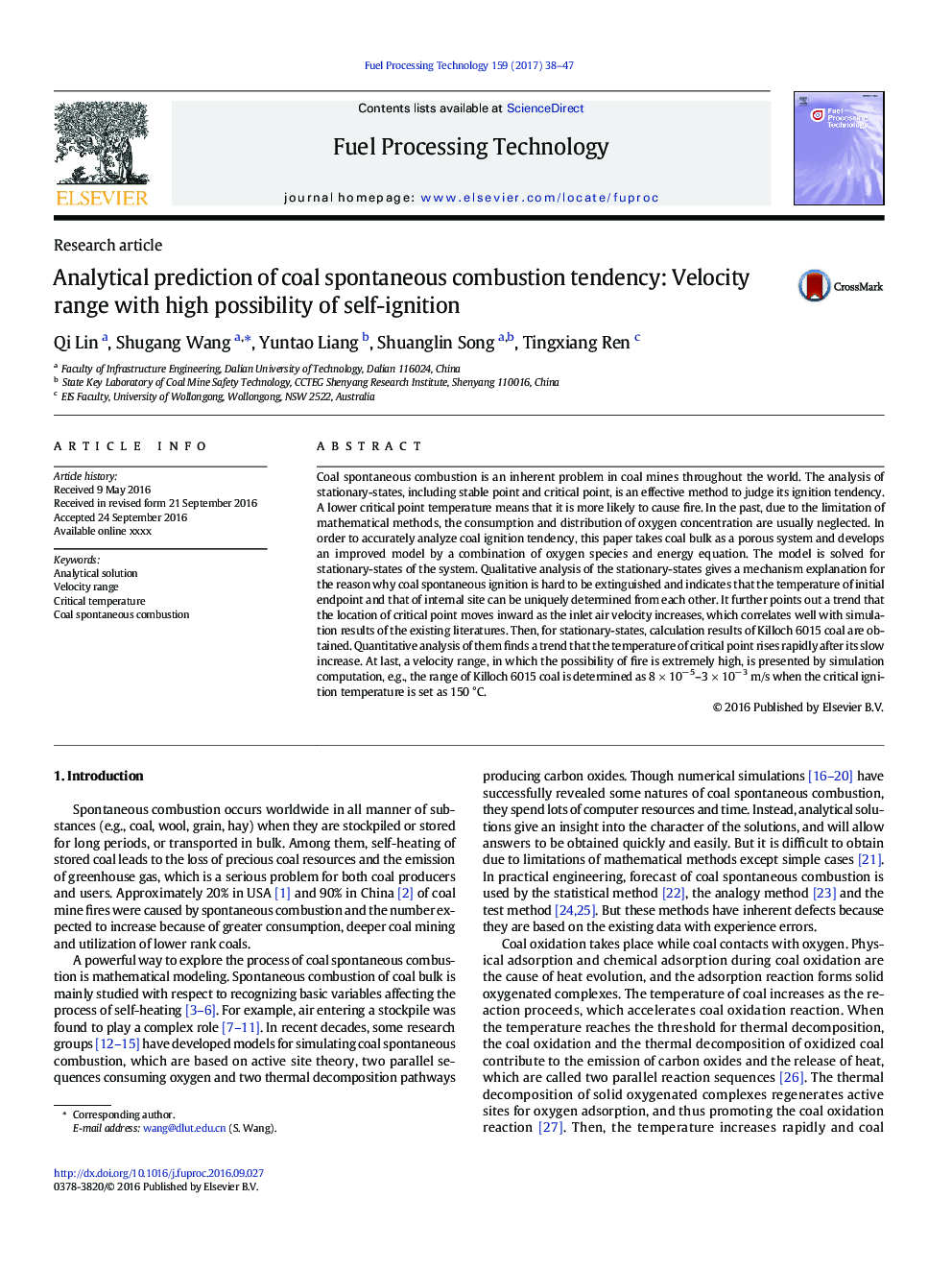| کد مقاله | کد نشریه | سال انتشار | مقاله انگلیسی | نسخه تمام متن |
|---|---|---|---|---|
| 4914342 | 1425387 | 2017 | 10 صفحه PDF | دانلود رایگان |
عنوان انگلیسی مقاله ISI
Analytical prediction of coal spontaneous combustion tendency: Velocity range with high possibility of self-ignition
ترجمه فارسی عنوان
پیش بینی تحلیلی گرایش احتراق خود به خود زغال سنگ: محدوده سرعت با احتمال بالا بودن خود اشتعال
دانلود مقاله + سفارش ترجمه
دانلود مقاله ISI انگلیسی
رایگان برای ایرانیان
کلمات کلیدی
راه حل تحلیلی، محدوده سرعت، دمای بحرانی، احتراق خود به خود زغال سنگ،
موضوعات مرتبط
مهندسی و علوم پایه
مهندسی شیمی
مهندسی شیمی (عمومی)
چکیده انگلیسی
Coal spontaneous combustion is an inherent problem in coal mines throughout the world. The analysis of stationary-states, including stable point and critical point, is an effective method to judge its ignition tendency. A lower critical point temperature means that it is more likely to cause fire. In the past, due to the limitation of mathematical methods, the consumption and distribution of oxygen concentration are usually neglected. In order to accurately analyze coal ignition tendency, this paper takes coal bulk as a porous system and develops an improved model by a combination of oxygen species and energy equation. The model is solved for stationary-states of the system. Qualitative analysis of the stationary-states gives a mechanism explanation for the reason why coal spontaneous ignition is hard to be extinguished and indicates that the temperature of initial endpoint and that of internal site can be uniquely determined from each other. It further points out a trend that the location of critical point moves inward as the inlet air velocity increases, which correlates well with simulation results of the existing literatures. Then, for stationary-states, calculation results of Killoch 6015 coal are obtained. Quantitative analysis of them finds a trend that the temperature of critical point rises rapidly after its slow increase. At last, a velocity range, in which the possibility of fire is extremely high, is presented by simulation computation, e.g., the range of Killoch 6015 coal is determined as 8 Ã 10â 5-3 Ã 10â 3 m/s when the critical ignition temperature is set as 150 °C.
ناشر
Database: Elsevier - ScienceDirect (ساینس دایرکت)
Journal: Fuel Processing Technology - Volume 159, May 2017, Pages 38-47
Journal: Fuel Processing Technology - Volume 159, May 2017, Pages 38-47
نویسندگان
Qi Lin, Shugang Wang, Yuntao Liang, Shuanglin Song, Tingxiang Ren,
